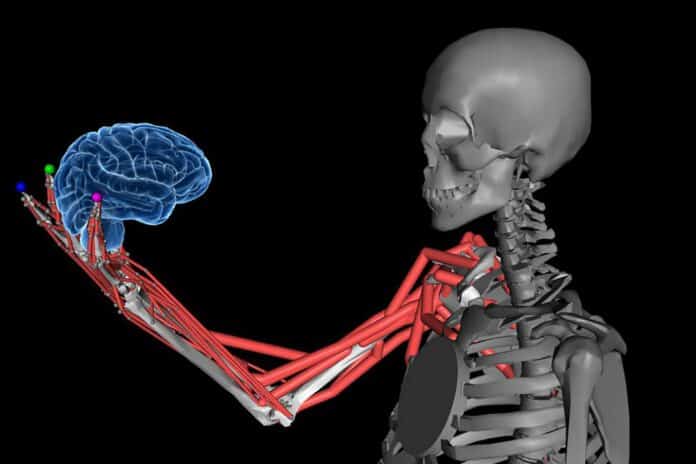The sense the brain uses to “know” the body’s movement and position is called proprioception. This sense is something like a ‘sixth sense’ that allows us to move freely without constantly watching our limbs.
Proprioception allows our brain to receive information on the position and movement of our limbs through a sophisticated network of sensors in our muscles. However, more is needed to know how the brain combines the various signals it gets from the muscles.
EPFL scientists used neural networks to study proprioception, aiming to explore how our brains create a cohesive sense of body position and movement.
In particular, they used musculoskeletal simulators to compute the statistics of the distributed sensors. The simulators help them generate a collection of “large-scale, naturalistic movement repertoire. Using this repertoire, they trained several task-driven neural network models on 16 computational tasks.
Each task represented a scientific hypothesis regarding the calculations made by the proprioceptive system, which comprises the somatosensory cortex and parts of the brainstem.
Thanks to this approach, scientists could comprehensively analyze how different neural network architectures and computational tasks influence the development of “brain-like” representations of proprioceptive information.
They found that the neural networks that predicted limb position and velocity were the most effective ones. This suggests that our brains first integrate the scattered muscle spindle information to comprehend bodily movement and position.
The study emphasizes task-driven modeling’s potential in neuroscience. Compared to conventional techniques, task-driven models can offer insights into the fundamental computational principles of sensory processing instead of only directly forecasting neuronal activity.
Scientists believe that the study potentially paves the way towards new avenues in neuroscience.
Journal Reference:
- Alessandro Marin Vargas, Axel Bisi, Alberto Chiappa, Chris Versteeg, Lee Miller, Alexander Mathis. Task-driven neural network models predict neural dynamics of proprioception. Cell 21 March 2024. DOI: 10.1016/j.cell.2024.02.036
